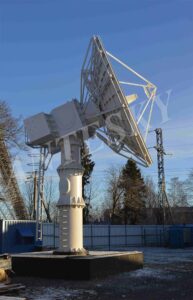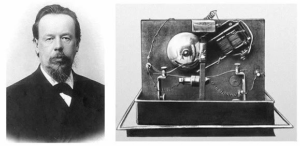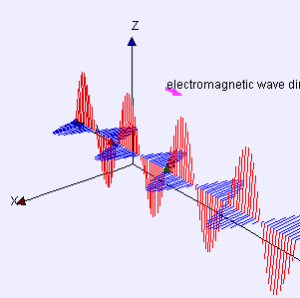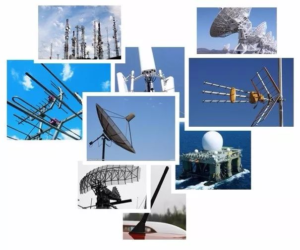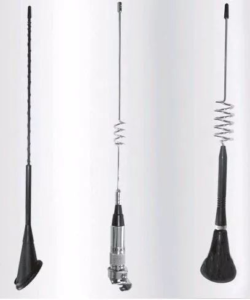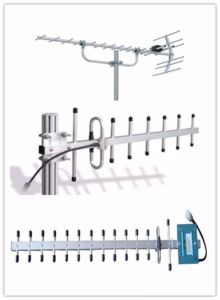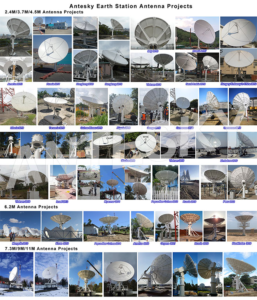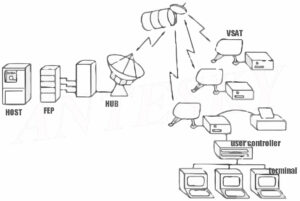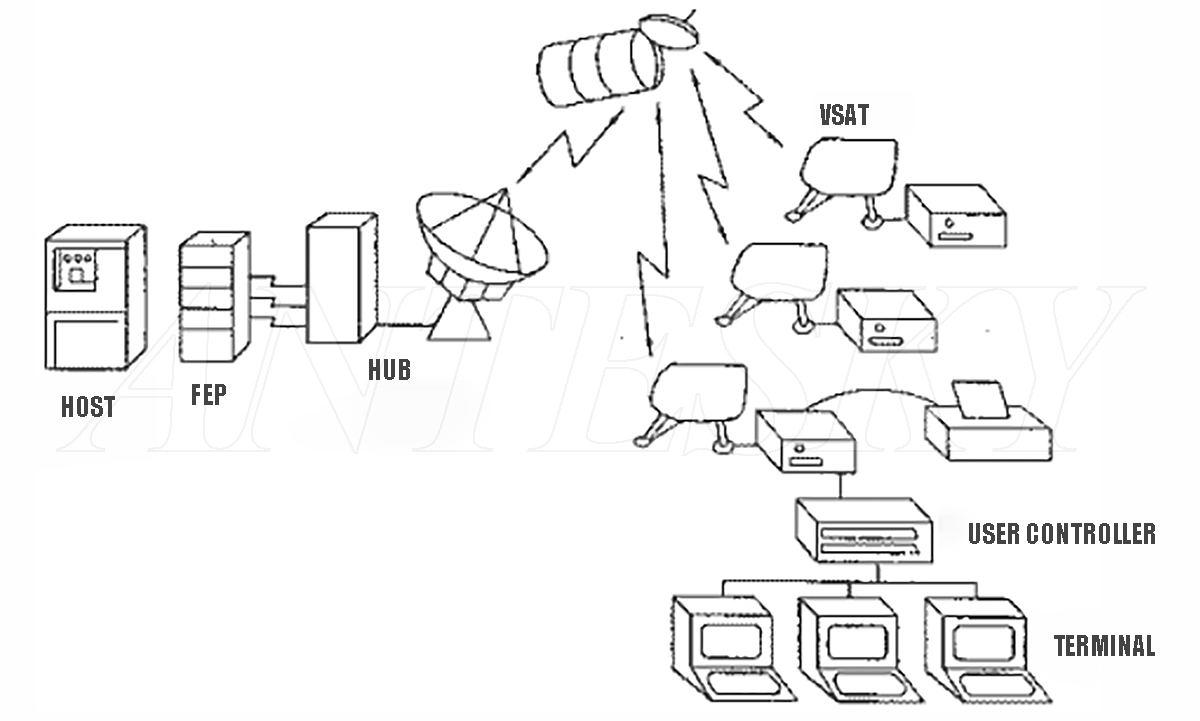
As a professional supplier of communication antennas and related equipment in China, Antesky is committed to popularizing various knowledge about antennas and communication industries. I believe everyone can learn and understand antennas from previous blogs and classic cases. What we want to introduce to you in today’s article is the origin and development of antennas and introduction to VSAT antenna system.
As we all know, antennas are a very common communication device in our lives. However, most people actually don’t know much about it. They may only know that it sends and receives signals.
This article is intended for readers with zero basic knowledge, both professionals and non-professionals. It is absolutely easy to understand and full of useful information.
Since the Russian scientist АлександрСтепанович Попов successfully invented the antenna in 1894, the antenna has a history of 130 years.
АлександрСтепанович Попов and his antenna
Throughout this long history, antennas have made outstanding contributions to the development and progress of human society.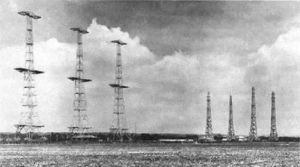
The British radar antenna that repeatedly performed extraordinary feats in World War II
Nowadays, whether it is daily work and life or scientific research and exploration, it is inseparable from the silent dedication of antennas.
So what kind of “wire” is an antenna, and why does it change our lives so completely?
In fact, the reason why antennas are awesome is because electromagnetic waves are awesome. One of the main reasons why electromagnetic waves are awesome is that they can propagate without relying on any medium. Even in a vacuum, it can come and go with ease and in an instant.
Electromagnetic wave effect diagram
Schematic diagram of electromagnetic wave propagation
In radio equipment, an antenna is a device used to transmit and receive radio waves. To put it more simply, an antenna is a “converter” – converting electromagnetic waves propagating on a transmission line into electromagnetic waves propagating in free space, or vice versa.
The English name of the antenna: Antenna (also means tentacles and intuition)
The role of antenna
When there is an electric field, there is a magnetic field. When there is a magnetic field, there is an electric field. In this cycle, there are electromagnetic fields and electromagnetic waves.
Electricity produces magnetism, magnetism produces electricity
There are really too many forms of antennas. Although there are many forms of antennas, they can be roughly classified based on their similarity.
Antenna types
According to wavelength: medium wave antenna, short wave antenna, ultra short wave antenna, microwave antenna…
According to performance: high gain antenna, medium gain antenna…
According to the direction: omnidirectional antenna, directional antenna, sector antenna…
Divided by use: base station antenna, TV antenna, radar antenna, radio antenna…
According to structure: line antenna, area antenna…
According to system type: unit antenna, antenna array…
We are showing the details about parabolic antennas, please click this article about parabolic antenna type.
If divided according to appearance, the common ones are as follows:
whip antenna
Yagi antenna
parabolic antenna
Of course, what we in the communications industry are most concerned about is the parabolic earth station antenna! According to the usage method, we are accustomed to classify them into large satellite dish, flyaway antenna, and vehicle mounted antenna.
So what is VSAT? Why has it developed so quickly?
VSAT is the abbreviation of VERYSMALL APERTURE TERMINAL, literal translation is “Very small aperture terminal “, free translation should be” Very small antenna Earth station “because of the traditional satellite communication system, so it is also called satellite small data station or personal Earth station The pinky here refers to the small antenna aperture of the small station equipment in the VSAT system, which is usually 0.3m-2.4m. VSAT is a new satellite communication system developed in the mid-1980s by using modern technology. The use of this system for communication has the characteristics of strong flexibility, high reliability, low cost, convenient use and small station can be installed directly on the client side. With the help of the VSAT user data terminal, it can directly use the satellite channel to network with the remote computer to complete data transmission, file exchange or remote processing, thereby getting rid of the problem of ground relay money in the region, which is in the ground network In remote areas where the network is not developed, the quality of communication lines is not good or it is difficult to transmit high-speed data, using VSAT as a data transmission means is a good choice. At present, it is widely used in banking, hotels, news, insurance, transportation, tourism and other departments. VSAT satellite communication network is generally composed of a large number of VSAT small stations and a main station (Hub) work together to form a wide-area sparse route (many stations, small business volume of each station) satellite communication network.
The rapid development of VSAT also benefited from the massive popularity of computers in the 1980s and the large increase in the need for computer networking. Because a large number of computer communication services are carried out between a host computer and many remote computers, VSAT network can economically and conveniently solve this kind of point-to-multipoint addressing which is difficult to deal with in ground communication network. In addition, at that time, VSAT had integrated many new technologies (such as packet transmission and switching technology, efficient multiple access technology, microprocessor technology, protocol standardization, earth station radio frequency technology, antenna miniaturization and high-power satellites), so that VSAT basically had the main advantages described in the previous section. As a result,VSAT has developed rapidly since the 1980s and has become one of the fastest growing areas in satellite communications.
Background and development status
VSAT satellite communication network is generally composed of a large number of VSAT small stations and a main station (Hub) work together to form a wide-area sparse route (many stations, small business volume of each station) satellite communication network.
Composition of VSAT satellite communication network
- Host station: The host station is also called the main station or central station and is the heart of the VSAT network. Like ordinary earth stations, it uses a large antenna with an antenna diameter generally about 3.5m to 8m (Ku band) or 7m to 13m (C band). In the VSAT satellite communication network that focuses on data services (hereinafter referred to as the data VSAT network), the host station is both a business center and a control center. The host station is usually placed together with the host computer or connected to the host computer through other (terrestrial or satellite) lines, serving as the business center (the central node of the network); at the same time, there is also a Network Control Center (NCC) in the host station responsible for all network for monitoring, management, control and maintenance. In the VSAT satellite communication network that mainly focuses on voice services (hereinafter referred to as the voice VSAT network), the control center may or may not be at the same station as the service center. The station where the control center is located is usually called the host station or the central station. Since the host station is involved in the operation of the entire VSAT network, its failure will affect the normal operation of the entire network, so its equipment is backed up. In order to facilitate reorganization, the host station generally adopts a modular structure, and the devices are interconnected using high-speed LAN.
- VSAT small station: VSAT small station consists of small-diameter antenna, outdoor unit (ODU) and indoor unit (IDU). Under the same conditions (such as the same frequency band and the same transponder conditions), in order to achieve direct communication between small stations, the antennas of small stations in the voice VSAT network are significantly larger than those of data VSAT small stations that only communicate with the main station.
- Satellite transponder: Generally, a synchronous satellite transparent transponder operating in the C or Ku band is used. In the first-generation VSAT network, C-band transponders were mainly used. Starting from the second-generation VSAT, Ku-band was mainly used. The specific band to be used not only depends on the VSAT equipment itself, but also depends on whether there are available on-board resources, that is, whether a Ku-band transponder is available. If not, then only the C-band can be used.
We believe you can learn something useful from above brief introduction of antenna VSAT system. Welcome to inquiry us if you are interested in this system. Our email sales@antesky.com.

